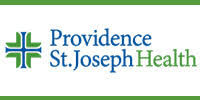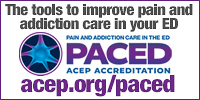The Nationwide Growth Of An ‘Island’ Nurse Role
By Mariah Taylor
A group of nurse scientists is building a national collaborative to formalize the role within hospitals.
Nurse scientists have been around for decades, but their prominence is increasing nationally as their influence in hospital care grows. Many of the top 100 systems in the U.S. have at least one clinically based nurse scientist on staff. Magnet recognition, research that calls for more doctorally prepared nurses, more academic-practice partnerships and an overall increase in education levels among nurses have all helped put more nurse scientists into the hospital care setting. Yet many nurse scientists find themselves the only one of their kind in the system.
“You’re kind of on an island in this role,” said Perry Gee, PhD, RN, enterprise director of nursing research and evidence-based practice, and nurse scientist and associate professor of research at Intermountain Health. Dr. Gee oversees nurse research at 33 hospitals across Utah, Colorado, Nevada, Montana and Wyoming for the Salt Lake City-based system. “I had no idea what I was going to do. But I found folks to help me, made connections, and that’s how we’ve grown.”
Like many nurse scientists, he developed hospital-based nurse research programs from scratch.
But Dr. Gee and Esther Chipps, PhD, RN, NEA-BC, FAONL, clinical nurse scientist at The Ohio State University Wexner Medical Center in Columbus, want to change that. Together, they are developing a national nurse scientist collaborative that aims to formulate the role, offer job descriptions and guidance, develop multisite studies, and create a national mentoring and support system. The collaborative has already attracted 200 nurse scientists nationwide.
“We’re still not very official — no professional organization, no formal forum, no place to store resources,” Dr. Gee said. “We’re working on offering resources so others don’t have to re-create them.”
Building the infrastructure has been one of the most challenging elements, not just in developing a national collaborative, but in helping make hospital-based nurse scientists roles a more appealing position.
“PhD-prepared nurses in academia follow a well-defined tenure track, with clear expectations for promotion,” Dr. Chipps, who is also a clinical professor of nursing at The Ohio State University College of Nursing, said. “Hospital-based nurse scientists don’t have that structure. Often we work alone, defining our own roles without support systems. The collaborative is working to build infrastructure — helping people define their roles, access funding, create sustainable models and build networks for multisite research. We also want to ensure hospital-based nurse scientists have scholarly support comparable to academic colleagues. Many hospitals don’t provide research assistants or regulatory experts, which are essential resources.”
The future of the collaborative
The group is creating resources that would make it easier for C-suite leaders to hire nurse scientists and add them to leadership teams.
“Hospital-based nurse scientists should also be recognized as leaders within their organizations, with influence at the executive nursing leadership table,” Dr. Chipps said. “Beyond conducting research, we need to be seen as go-to leaders for new knowledge and innovation.”
The collaborative is also working to attract new PhD graduates to the industry role, as many in the field are nearing retirement.
Although the collaborative is still in development, nurse scientists from Israel and Australia have reached out, wanting to make the effort international.
“This role improves ROI, strengthens nursing culture, supports Magnet or Pathways, and builds engagement and resilience among nurses,” Dr. Gee said. “Nurses involved in research are more engaged, turn over less and report greater resilience. Supporting them supports the entire organization.”
Calendar




